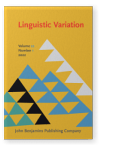Vol. 22:1 (2022) ► pp.1–77
(No) variation in the grammar of alternatives
The paper reports the results of an in-depth crosslinguistic study of intervention effects and the grammar of alternatives in a typologically diverse sample of five languages: Palestinian Arabic (Afro-Asiatic, Semitic), Russian (Indo-European, Slavic), Samoan (Austronesian, Oceanic), Turkish (Altaic, Turkic), and Yoruba (Niger-Congo, Defoid). In all of these languages, we find an interesting asymmetry in that focus evaluation interrupts question evaluation and causes an intervention effect, but not vice versa. We take our data to inform the crosslinguistic analysis of two alternative-evaluating operators, the squiggle operator and the question operator. To capture the observed absence of variation, we propose two semantic universals: The squiggle operator unselectively evaluates all alternatives in its scope. The question operator, on the other hand, is selective.
Article outline
- Introduction
- 1.The grammar of alternatives – Informal version
- 1.1Association with alternatives
- 1.2Intervention effects
- 1.3Other associations with Q
- 1.4Crosslinguistic variation in the grammar of alternatives
- 2.The data from the crosslinguistic study
- 2.1Methodology
- 2.2The crosslinguistic data
- 2.2.1Palestinian Arabic
- Preliminaries and structural prerequisites
- Intervention data
- 2.2.2Russian
- Preliminaries and structural prerequisites
- Intervention data
- 2.2.3Samoan
- Preliminaries and structural prerequisites
- Intervention configurations
- 2.2.4Turkish
- Preliminaries and structural prerequisites
- Intervention configurations
- 2.2.5Yoruba
- Preliminaries and structural prerequisites
- Intervention configurations
- 2.2.1Palestinian Arabic
- 2.3Summary of results
- 3.Analysis
- 3.1Technical implementation using distinguished variables
- 3.2Applying the framework to the crosslinguistic data
- Example 1.Intervention effect in a wh-in-situ question in Turkish
- Example 2.Absence of intervention in focus association across a question in Russian
- 4.Connecting the analysis to literature on the grammar of alternatives
- 5.Discussion and conclusion
- Acknowledgments
- Notes
- Abbreviations
-
References
For any use beyond this license, please contact the publisher at [email protected].
